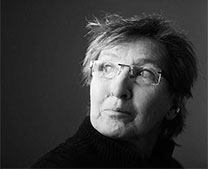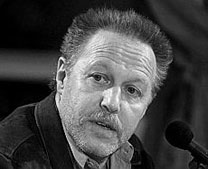


Sune Jonsson: Nine Reflections /1
“The reportage confrontation is a fragile method of documentary work. But even so unfavorable an assigment situation can be transformed: if the photographer is given sufficient time, if he is given time to gain a knowledge of the environment that will enable his pictures to function as documentary statements, if he has the personal qualifications to deepen his empathy, his social commitment, and his responsibility as a fellow human being…” (Sune Jonsson, from reflection 8. Photo by Sune Jonsson: Prague, August 1968.)
NINE REFLECTIONS CONCERNING 1/125th
By Sune Jonsson (1978)
1
It is something of a romantic characterization to describe photography as the art of the instant. It is said, for example, that the art of the camera is to see quickly and straight ahead. And for nearly half a century now, photographers have indeed been intoxicating themselves with the very ability of the 35mm camera to capture on film the most ephemeral and most unguarded of instants. This has naturally been an asset that has both enriched and characterized photography.
In 1/125th of a second, Henri Cartier-Bresson coordinates “eye, intellect, and feeling” and speaks philosophically of the instant of exposure as “the decisive moment”. He feels that only a tiny portion of the overall photographic process can be described as creative: to wit, that moment in which the photographer makes his decision. Cartier-Bresson is an artist whom only the photographic medium and its special avenues of communication could have created: the stroller-through-the-world, in whose cosmorama environments and cultures become one historic flow, a constantly changeable sum of a large number of parts that suddenly arrange themselves in that decisive 1/125th of a second in which the photographer sums up his experience of reality. Reportage confrontations can thus become, as happens in Cartier-Bresson’s pictures from the Europe of the 30s, more profound, richer in content – in short: documentary photography. (To be continued on Filmkommentaren with eight more reflections…)

Henri Cartier-Bresson: Fish market
EXHIBITION NEWSPAPER CATALOGUE
Sune Jonsson’s essay was noticed by Tue Steen Müller on the photo exhibition Youth in Randers 1978-1979 seen by Finn Larsen and Lars Johansson, at Øksnehallen in Copenhagen and now shown as When the asphalt sways in Copenhagen Main Library, and Müller wrote “… curated by Finn Larsen and Hans Grundsø, with an exhibition newspaper catalogue of almost 100 pages that is in Danish AND English language and includes photos from the exhibition about how young people looked like, what they did in their free time, how they met the opposite sex, cigarettes, beer, mopeds – there is also a section on a rocker group – ordinary life interpreted in an extraordinary manner, a close-up of a generation in the sixth biggest city in Denmark some four hours away from the capital, where the exhibition now is to watch.
Yes, a classical documentary approach by two skilled photographers Lars Johansson and Finn Larsen, who later on have developed their own careers in film and literature and visual art – reminding us how important it is to have time to go deep and to catch the moment. Larsen, editor of the impressive newspaper catalogue, has been so generous to publish a great reflective article by Swedish legendary documentary photographer and filmmaker Sune Jonsson. Here is a quote:
‘The reportage confrontation is a fragile method of documentary work. But even so unfavorable an assigment situation can be transformed: IF the photographer is given sufficient time, IF he is given time to gain a knowledge of the environment that will enable his pictures to function as documentary statements, IF he has the personal qualifications to deepen his empathy, his social commitment, and his responsibility as a fellow human being…’
A must-read article for documentarians as the exhibition is an inspiration. It is all about the Gaze as Albert Maysles would have put it.
http://goldendaysfestival.dk/event/når-asfalten-gynger
Publisher of the newspaper catalogue: Finn Larsen info@finnlarsen.se
PHOTO
Sune Jonsson: Prag, augusti 1968. Jonsson skriver i billedteksten i sin bog Album – fotografier fem decennier, 2000, hvorfra billedet er hentet: ”Örjan Wallqvist var redaktör för veckotidningen VI och inbjöd mig att tillsammans med journalisten Dag Lindberg göra en resa till Tjeckoslovakien och Prag. Uppdraget innebar att beskriva den så kallade Prag-våren med dess spirandeförsta löfte om demokratisering av en kommunistisk öststat under Alexander Dubceks ledning. Vi var der den dramatiska dagen 21 augusti, närden ryska invasionen kom. Jag försökte inrikta mig på att spegla konfrontationen mellan de förhoppningsfulla, men nu grundbesvikna pragborna och de oförstående ryska soldaterna…”
Teksten er hentet fra udstillingsavisen / kataloget til denne udstilling: